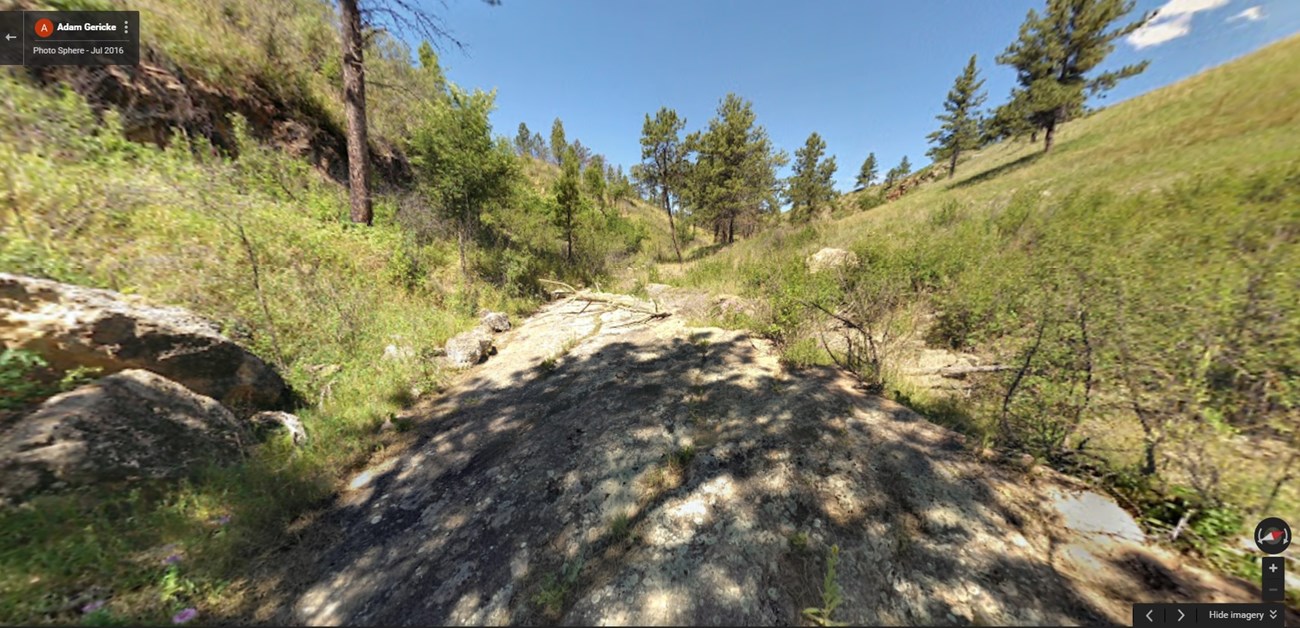
NPS Photo/Adam Gericke Area Description: Don’t look at the obvious. The colors of the prairie go beyond the green of the grass and trees. Lichens on the rocks put on a show that can make a rainbow blush. Ranging from vivid blues to neon greens to shocking oranges and vibrant reds, these underrated denizens of the prairie only thrive in the cleanest of air. Visible Vegetation: Common Mullein, Wild Bergamot, Box Elder, Ponderosa Pine, Poison Ivy, Snowberry Possible Animal Habitat: Mammals: Bison, Elk, Mule Deer, White-tailed Deer, Coyote, Mountain Lion, Hayden’s Shrew, Red Squirrel, Porcupine Birds: Mourning Dove, American Crow, Rock Wren, House Wren, Mountain Bluebird, Spotted Towhee, Chipping Sparrow, Western Meadowlark, Brewer’s Blackbird, American Goldfinch Geology: On the ground is a wonderful example of the Minnelusa Formation. This formation consists of alternating bands of limestone, sandstone, and shale. It formed approximately 320 million years ago. For Educators: Thematic Information: Though this area burned the year before in some areas the effects are hardly noticeable. This rock is covered with lichen. Lichen just recently was discovered to be a symbiotic relationship between an algae, a fungus, and a bacteria. http://www.nytimes.com/2016/07/22/science/lichen-symbiotic-relationship.html?_r=0 Lichen are sensitive to air pollution especially sulphur dioxide and are after thought of as an indicator of air quality. Wind Cave is classified as a Class 1 air shed. Recommended Student Activity: What are some ways that humans affect air quality? |
Last updated: September 22, 2016
